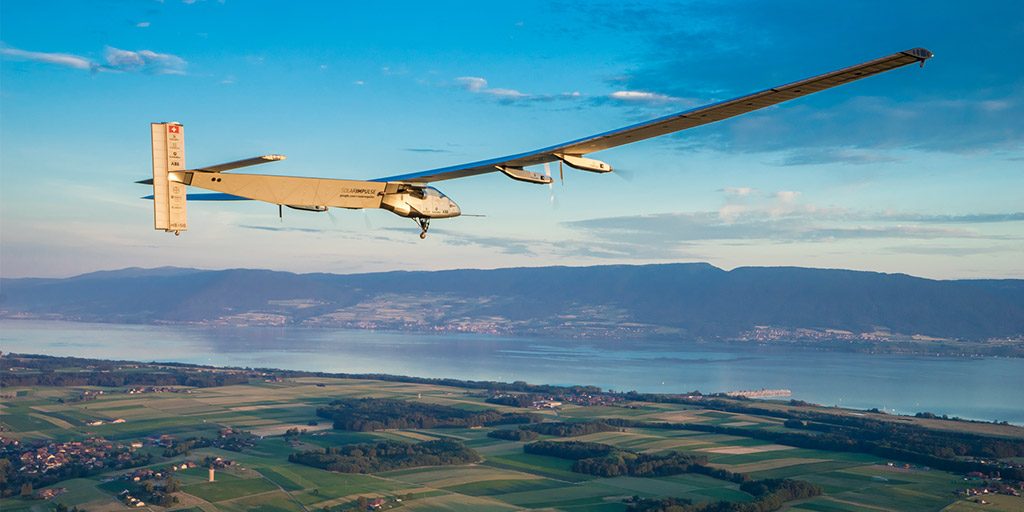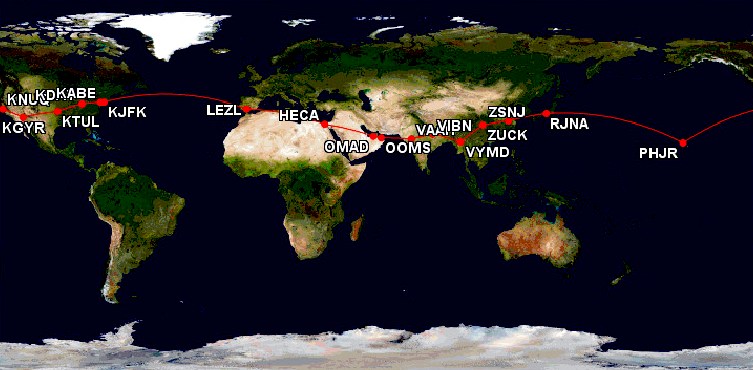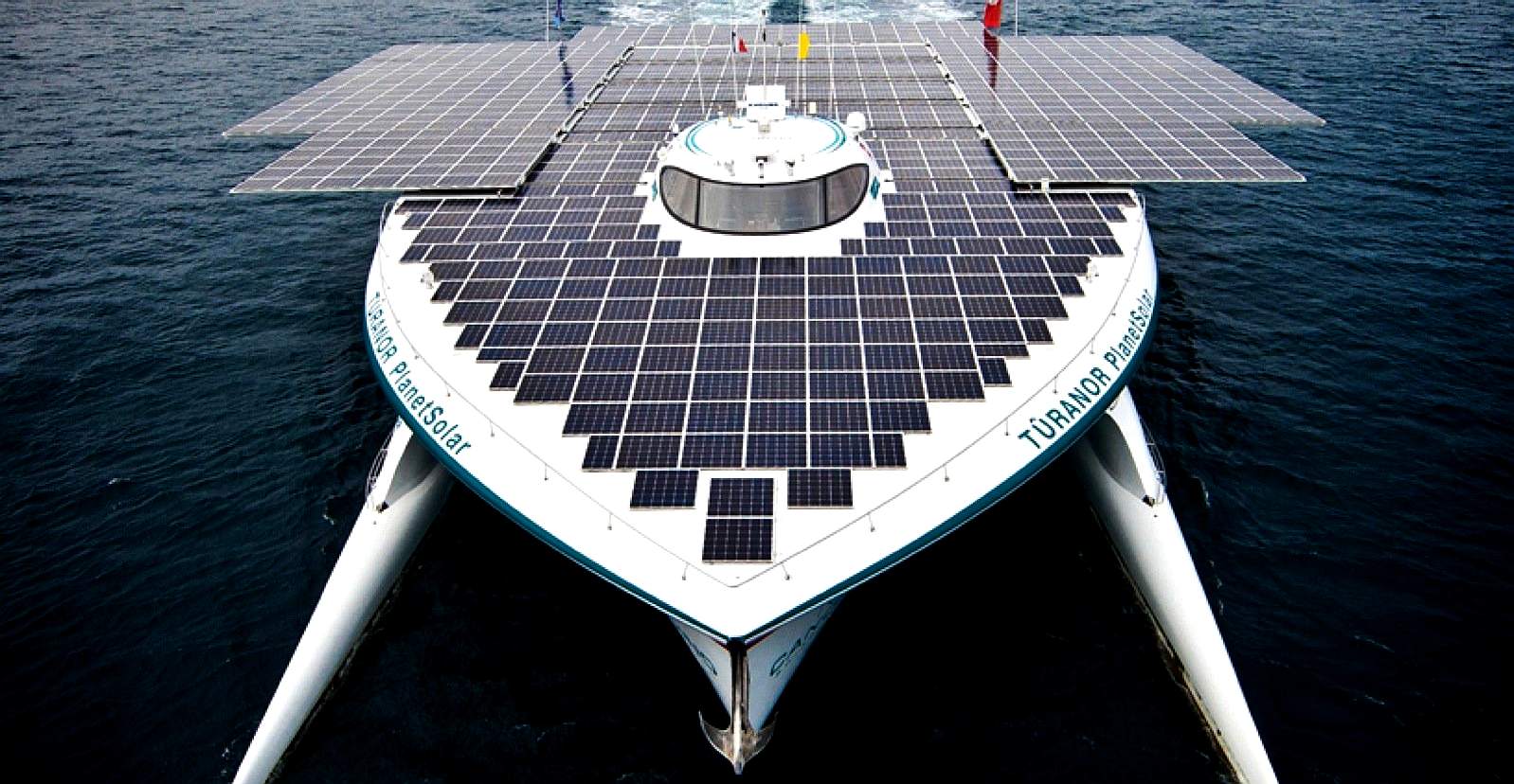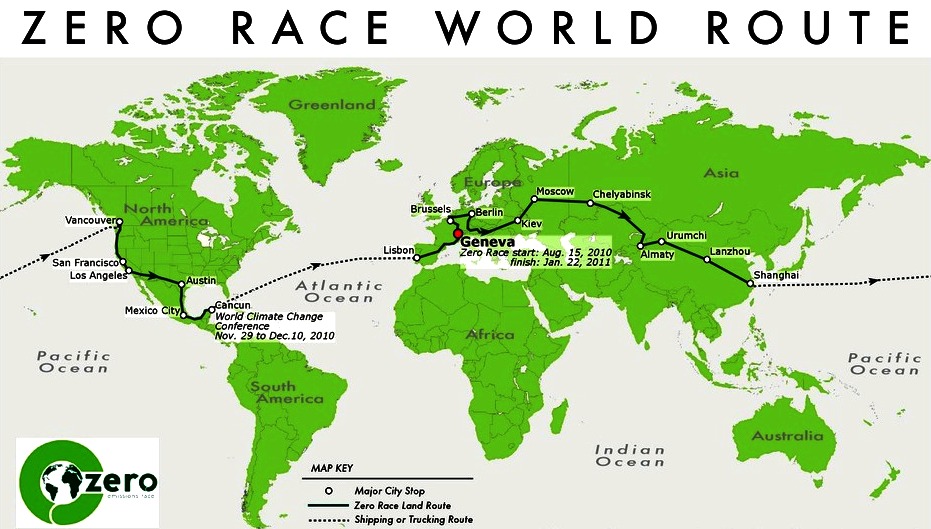
SOLAR IMPULSE JULY 2016 – The Solar Impulse 2 completed a multi-stop circumnavigation after 15 years in the planning, development and finally, the record attempt.
Solar Impulse is a Swiss long-range experimental solar-powered aircraft project, and also the name of the project’s two operational aircraft. The privately financed project is led by Swiss engineer and businessman André Borschberg and Swiss psychiatrist and balloonist Bertrand Piccard, who co-piloted Breitling Orbiter 3, the first balloon to circle the world non-stop. The Solar Impulse project’s goals were to make the first circumnavigation of the Earth by a piloted fixed-wing aircraft using only solar power and to bring attention to clean technologies.The aircraft is a single-seated monoplane powered by photovoltaic cells; they are capable of taking off under their own power. The prototype, often referred to as Solar Impulse 1, was designed to remain airborne up to 36 hours. It conducted its first test flight in December 2009. In July 2010, it flew an entire diurnal solar cycle, including nearly nine hours of night flying, in a 26-hour flight. Piccard and Borschberg completed successful solar-powered flights from Switzerland to Spain and then Morocco in 2012, and conducted a multi-stage flight across the US in 2013.A second aircraft, completed in 2014 and named Solar Impulse 2, carried more solar cells and more powerful motors, among other improvements. On 9 March 2015, Piccard and Borschberg began to circumnavigate the globe with Solar Impulse 2, departing from Abu Dhabi in the United Arab Emirates. The aircraft was scheduled to return to Abu Dhabi in August 2015 after a multi-stage journey around the world. By June 2015, the plane had traversed Asia, and in July 2015, it completed the longest leg of its journey, from Japan to Hawaii. During that leg, the aircraft’s batteries sustained thermal damage that took months to repair. Solar Impulse 2 resumed the circumnavigation in April 2016, when it flew to California. It continued across the US until it reached New York City in June 2016. Later that month, the aircraft crossed the Atlantic Ocean to Spain. It stopped in Egypt before returning to Abu Dhabi on 26 July 2016, more than 16 months after it had left, completing the approximately 42,000-kilometre (26,000-mile) first circumnavigation of the Earth by a piloted fixed-wing aircraft using only solar power.
THE GUARDIAN 26 JULY 2016Solar Impulse 2 has completed the first round-the-world flight by a solar-powered aeroplane, after touching down in Abu Dhabi early on Tuesday.The final leg of the feat, aimed at showcasing the potential of renewable energy, was a bumpy one, with turbulence driven by hot desert air leaving the solo pilot, Bertrand Piccard, fighting with the controls.The plane, which has a wingspan wider than a Boeing 747 and carries more than 17,000 solar cells on its wings, began the circumnavigation in March 2015 in Abu Dhabi. It has since crossed both the Pacific and Atlantic Oceans using no fossil fuel and has spent more than 23 days in the air.Speaking to the Guardian from the cockpit shortly before landing, Piccard said he was feeling emotional as he neared the end of the journey: “It is a very, very special moment – it has been 15 years that I am working on this goal.“I hope people will understand that it is not just a first in the history of aviation, but also a first in the history of energy,” he said.“All the clean technologies we use, they can be used everywhere. So we have flown 40,000km, but now it is up to other people to take it further. It is up to every person in a house to take it further, every head of state, every mayor in a city, every entrepreneur or CEO of a company.“These technologies now can make the world much better and we have to use them, not only for the environment, but also because they are profitable and create jobs.”During daylight, the solar panels charged the plane’s batteries, which make up a quarter of the craft’s 2.3 tonne weight. The pilot also climbed to 29,000 feet during the day and glided down to 5,000 feet at night, to conserve power. The plane flies at about 30mph, although it can go faster if the sun is bright. The plane could fly almost perpetually but the pilots cannot, due to the gruelling conditions aboard.
Bertrand alternated with André Borschberg to fly the 16 legs of the journey, spending up to five days in the unheated and unpressurised cabin, taking only short naps and with the single seat doubling up as a toilet. Borschberg flew the longest leg, 4,000 miles over the Pacific from Japan to Hawaii, smashing the record for the longest uninterrupted journey in aviation history.But Bertrand said his biggest challenge was getting his pilot’s licence in the first place: “The challenge was to come from the world of ballooning and hang gliding to the world of aeroplanes and instruments and procedures. When I initiated the project, I had no aeroplane licence so I had to work for it over six years. I did hundreds of hours to be allowed to fly a prototype aeroplane.”Piccard and Borschberg, both Swiss, are seasoned adventurers. Piccard made the first non-stop balloon flight around the world in 1999, while Borschberg, a former Swiss Air Force fighter pilot, has had brushes with death involving an avalanche and a helicopter crash.Bertrand said the final leg from Cairo to Abu Dhabi was particularly tough, because of having to fly at high altitude to avoid the worst of the turbulence. “It is a much more demanding and exhausting flight,” he said. “It is so turbulent, there were moments in the last night that I could not rest at all, I just had to fight with my flight controls.”He said his ground team had made the record-breaking flight possible: “I am alone in the plane but all the people who have worked on this project are people who are completely devoted and committed to success. I will give to each of them a big hug, because they made my dream possible.”
The aim of the Solar Impulse adventure was not to develop solar-powered planes for widespread use, but to show the capabilities of renewable energy.“I worked for 15 years to have [this] demonstration of the improvements of these technologies, so now I really want to leverage this demonstration and create a world council for clean technologies,” Piccard said. “That will allow all these experts and specialists to advise the governments and big corporations on which types of technology to use to profitably fight climate change and profitably protect the environment.”Ban Ki-moon, the UN secretary-general, said: “Solar Impulse has flown more than 40,000 kilometers without fuel, but with an inexhaustible supply of energy and inspiration. This is a historic day for Captain Piccard and the Solar Impulse team, but it is also a historic day for humanity.“You may be ending your around the world flight today, but the journey to a more sustainable world is just beginning. The Solar Impulse team is helping to pilot us to that future.”Solar Impulse’s journey has not been without difficulties. Crosswinds in China caused weeks of delays in 2015 and overheating batteries during the Pacific crossing forced it to spend the winter inside a Hawaiian hangar. The team also overcame financial troubles in 2015 after raising €20m from sponsors. By Damian Carringto
SOLAR PILOTS – [Left] André Borschberg FRSGS (born December 13, 1952) is a Swiss entrepreneur, explorer, pilot and speaker. He is the co-founder of the Solar Impulse project, the first ever round-the-world solar flight, successfully completed in July 2016. During the Japan-to-Hawaii leg, André broke the world record for longest solo flight in an airplane of any kind: 117 hours and 52 minutes, breaking Steve Fossett’s 2006 record. Before that, on 7 July 2010, André completed the first 24-hour solar powered flight. The flight set records for the longest manned solar-powered flight and the greatest height reached by a manned solar aircraft. [Rights] Bertrand Piccard FRSGS (born 1 March 1958) is a Swiss psychiatrist and balloonist. Along with Brian Jones, he was the first to complete a non-stop balloon flight around the globe, in a balloon named Breitling Orbiter 3. He was the initiator, chairman, and co-pilot, with André Borschberg, of Solar Impulse, the first successful round-the-world solar powered flight. Piccard was born in Lausanne (Switzerland). His grandfather Auguste Piccard was a balloonist and his father Jacques Piccard was an undersea explorer.

The Solar Impulse project aimed to demonstrate the capability and potential of clean technologies. The Solar team included pilot André Borschberg and Bertrand Piccard who piloted the aircraft across the Atlantic Ocean, arriving in Seville, Spain, on 23 June. The aircraft next stopped in Cairo, Egypt, on 13 July, and landed in Abu Dhabi on 26 July, completing the around-the-world trip in a total of 17 stages and 16-1/2 months; it was the first circumnavigation of the Earth by a piloted fixed-wing aircraft using only solar power at a reported cost of $170 million dollars.

On the 4th of May 2012, history was made, as Raphael Domjan, at the helm of a giant of a catamaran powered only by solar panels crossed the finishing line at Monaco to become the first electric boat to sail around the world. MS Tûranor PlanetSolar, known under the project name PlanetSolar, was (@ 2018) the largest solar-powered boat in the world. The vessel was launched on the 31st March 2010, also going into the Guinness Book of World Records. The project was mostly financed by Immo Stroeher, the owner of the boat.

ZERO – Green cars raced around the world in 2010. Starting from the Swiss capital city Geneva, the teams will cover 30,000 kilometers (18,650 miles) on their circumnavigation of the planet, arriving back in Geneva 80 days later. All the vehicles are powered by electricity generated from renewable energy sources, and competitors are expected to achieve up to 500km (186 miles) per day at an average speed of 80km/h (50 miles per hour). Recharging will be done over a four hour lunch break. The organizers said that the Zero Race is all about sustainable mobility and transport, but the main aim of the race is to “generate enthusiasm for vehicles powered by renewable and sustainable energy”.
Bertrand Piccard initiated the Solar Impulse project in November 2003 after undertaking a feasibility study in partnership with the École Polytechnique Fédérale de Lausanne. As a mechanical engineer, co-founder André Borschberg directed the construction of each aircraft and oversees the preparation of the flight missions. By 2009, they had assembled a multi-disciplinary team of 50 engineers and technical specialists from six countries, assisted by about 100 outside advisers and 80 technological partners.The project is financed by a number of private companies and individuals, as well as receiving around CHF 6 million (US$6.4 million) in funding from the Swiss government. The project’s private financial backers include Omega SA, Solvay, Schindler, ABB and Peter Diamandis. The EPFL, the European Space Agency and Dassault have provided technical expertise, while SunPower provided the aircraft’s photovoltaic cells.Piccard stated that the entire project from its beginnings in 2003 until mid-2015 had cost €150 million. It raised another €20 million in late 2015 to continue the round-the-world flight.
